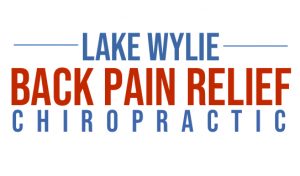Neck pain and headaches can be very disabling and can significantly alter a person’s normal pattern of living. Simple things like reading the newspaper, cooking, driving a car, and/or looking down when feeding a baby can become almost intolerable. Canceling plans for the day or saying “no” to vacations can be very disheartening and often occurs because of severe neck pain and/or headaches making these activities simply, “no fun.” The cause of the headaches associated with neck pain and cervical dysfunction is usually due to the compression caused by tight neck muscles squeezing the upper three nerve roots in the neck region, resulting in radiating pain into the head. Frequently, light and noise sensitivity, as well as nausea, can accompany a severe headache, which only adds to the activity limitations associated with neck pain. In fact, there are many experts who feel most headaches, even migraines, stem from the neck or are at least are very closely related. Since neck pain affects approximately two thirds of the population at some point during their lifetime, it’s clear that headaches, in the absence of neck pain, are quite uncommon.
Another interesting and lesser-known relationship is the jaw (frequently referred to as the TMJ) and its association with neck function, especially the upper cervical vertebrae and headaches. The muscles that move the jaw/TMJ are largely innervated by the 5th cranial nerve, also called the trigeminal nerve. Several studies have found that when stimulating structures innervated by the trigeminal nerve, neck and/or jaw pain is created and vise versa. Similarly, patients with jaw problems (called temporomandibular dysfunction or TMD) often report neck pain. When we open our mouth wide, head-neck extension always occurs followed by head-flexion when we close the jaw. Hence, the neck is always moving when we chew, yawn, talk, and clench our teeth. In fact, all of these everyday activities result in jaw, head, neck motion extending from the base of the skull and first cervical vertebra (occiput-C1) and continues down through the entire cervical spine.
One study investigated the relationship between neck symptoms and jaw function—specifically active mouth opening, and pressure pain sensitivity in a trigeminal nerve innervated region—after a spinal manipulation was applied to the upper neck vertebrae. In the study, 37 female patients with neck pain were randomly assigned to one of two groups (control and experimental) and both before and after treatment, researchers measured the participants’ ability to open their mouths as well as any pain associated with the activity. The experimental group that received upper neck manipulation showed a significant increase in active mouth opening motion as well as improved pressure pain tolerance compared with the control/non-manipulation group. This study is very important as many people suffer from neck pain, headaches, and TMD. In order to properly treat these patients, treatment must focus on multiple regions, not just the neck area. It has been demonstrated when we bite down, there is a corresponding tightening of two important muscles in the neck and upper back region. Similarly, studies show relaxation of muscles in the neck, upper back, and TMJ after spinal manipulation to the neck is applied. Injuries to the TMJ are common but often not pursued by patients as often they’ll say, “my jaw clicks and snaps but I don’t think about it much.”

